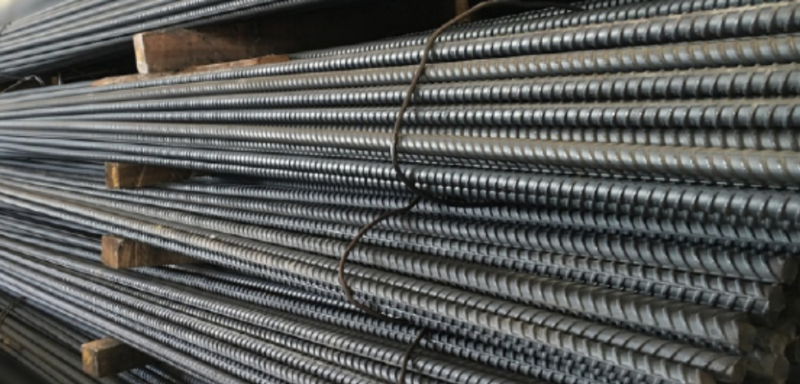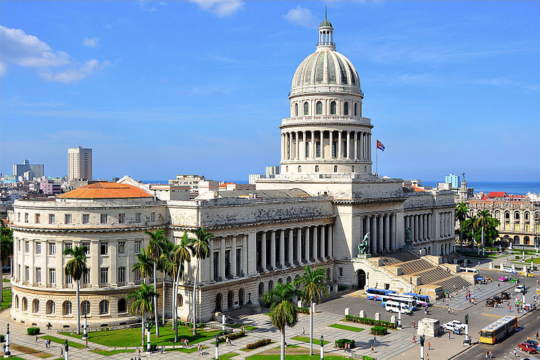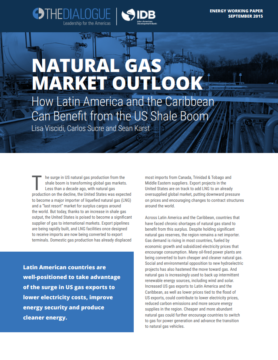Can Spain Solve the Cuba Problem?
By all accounts, Spain wants to bring change to the European Union’s Cuba policy. In so doing, it is tackling a foreign policy challenge that often sheds more heat than light.
A Daily Publication of The Dialogue
At the G20 summit on Oct. 30, U.S. President Joe Biden and European Commission President Ursula Von der Leyen agreed on setting carbon tariffs on steel imports in an effort to tackle carbon emissions. Among others, some objectives of the use of carbon taxes are to push trading partners to strengthen their own emissions rules, as well as to even the playing field for domestic companies. What does the plan entail, and what are the benefits and risks for developed countries of imposing the carbon tariffs? How will they affect steel companies and producing countries in Latin America, such as Brazil and Mexico? How will trade flows between the United States, Europe and Latin American countries change due to the planned carbon tariffs?
Nasim Fussell, partner at Holland & Knight: “At the G20 summit last month, as part of a highly anticipated resolution to the section 232 metal dispute, the United States and the European Union announced plans for a green steel club to unite like-minded nations to address climate change and overcapacity. Presidents Biden and Von der Leyen agreed to replace the section 232 tariffs on steel and aluminum imposed by the Trump administration with a tariff-rate quota (TRQ) system. Though complicated, the deal has generally been welcomed as a reset in U.S.-E.U. relations. Biden and Von der Leyen also agreed to negotiate—together with like-minded economies—future steel and aluminum arrangements to restore market-oriented conditions and address carbon intensity. Specifics remain unclear, but broadly, the arrangements would restrict market access for nonmembers, ensure that members’ domestic policies support lowering carbon intensity and refrain from mercantilist practices. It is premature to assume that such arrangements will result in ‘carbon tariffs’ as the mechanics and legality of such border adjustments remain in question between even the United States and the European Union. However, metal-producing countries in Latin America should prepare to demonstrate commitments to green production and tackling overcapacity. Biden and Von der Leyen made clear that these will be prerequisites to discussions with the United States and European Union, either on adjustments to the current 232 arrangements with the United States or membership in a future green steel club. The risk of non-action is losing a seat at the table where the rules for global steel and aluminum trade will be written.”
Devry Boughner Vorwerk, member of the Advisor board and CEO of DevryBV Sustainable Strategies: “The agreement is considered a landmark bilateral trade deal to decarbonize sectors. Really, it’s a ‘stopgap’ until 2024, when the United States and the European Union plan to reach an agreement on standards used to establish carbon-based tariffs. Until then, beginning in January, the United States will impose a messy tariff rate quota regime, establishing 16 different import quotas for aluminum and 54 for steel. Import tariffs within quota are zero percent, and out-of-quota tariffs range from 10-25 percent. Argentina and Brazil are already subject to quotas negotiated in 2018. For Mexico, the USMCA ended tariffs and monitors import ‘surges,’ so it’s already under a managed trade situation. Brazil leads steel production across the region, having produced 31 million metric tons in 2020. In contrast, China produced more than one billion metric tons in the same period. Other top producers in the region are Mexico, Argentina, Chile, Colombia and Peru. Obviously, there is more happening behind the scenes. It’s about shoring up the alliance between the United States and the European Union on their approach to China, combating subsidized steel not subject to the same environmental or labor standards, reducing prices during an inflationary period and giving a nod to U.S. manufacturers to continue reducing their carbon footprint. That said, we can expect carbon reduction to become an integral part of trade negotiations, resulting in the form of tariffs or border taxes, which can be essential tools to establish the price of carbon and to push the ‘pay for’ onto consumers. Two years is not much time for companies to demonstrate progress on carbon reduction. It would behoove Mexico and Canada under the USMCA construct to request to join those carbon trade negotiations now. Furthermore, the Pacific Alliance countries could make the same request. Ultimately, the way Latin America remains competitive is for companies across the region to expeditiously implement robust ESG frameworks within their businesses.”
Cecilia Aguillón, director of the Energy Transition Initiative at the Institute of the Americas: “The use of trade policy to decarbonize the largest energy- and carbon-intensive industries such as aluminum and steel can be an effective tool to accelerate global emission reductions. The recent U.S.-E.U. trade agreement does not end the controversial import tariffs that former U.S. President Donald Trump imposed. Rather, it allows limited volumes to enter the United States tariff-free. In exchange, the European Union is to eliminate its retaliatory tariffs on U.S. goods. Both parties are to negotiate an arrangement by 2024 to include the use of carbon tariffs to reduce emissions. Both the U.S. and the E.U. markets are large enough to affect manufacturing changes at a global scale, similar to how California’s fuel efficiency mandates caused the car industry to produce low emission vehicles, which affected sales worldwide. Imposing hefty tariffs and emission standards with exemptions for carbon-free commodities could make the production of green steel and aluminum competitive in the United States and Europe, where policies and incentives are already encouraging industries to decarbonize. Latin American countries such as Brazil that have a plethora of renewable energy resources could have an advantage because they can use low-cost hydro, solar and wind to manufacture energy-intensive products and comply with low- or zero-carbon standards. Depending on how the policy is crafted, carbon tariffs might be the mechanism that results in meaningful emission reductions from the global heavy duty industry sector.”
 The Latin America Advisor features Q&A from leaders in politics, economics, and finance every business day. It is available to members of the Dialogue’s Corporate Program and others by subscription.
The Latin America Advisor features Q&A from leaders in politics, economics, and finance every business day. It is available to members of the Dialogue’s Corporate Program and others by subscription.
By all accounts, Spain wants to bring change to the European Union’s Cuba policy. In so doing, it is tackling a foreign policy challenge that often sheds more heat than light.
This week in Havana, Cuba and the European Union will begin negotiations designed to put an end to 25 years of quarrels.
Given their close proximity to the United States, LAC countries are well-positioned to capitalize on the surplus of US gas exports and current buyer’s market.
 Governments in the United States, Europe and elsewhere are seeking to use tariffs on goods such as steel to help lower carbon emissions. // File Photo: Pixabay.
Governments in the United States, Europe and elsewhere are seeking to use tariffs on goods such as steel to help lower carbon emissions. // File Photo: Pixabay.

